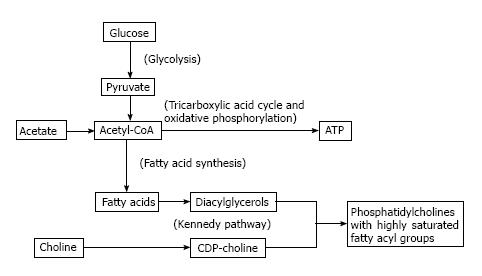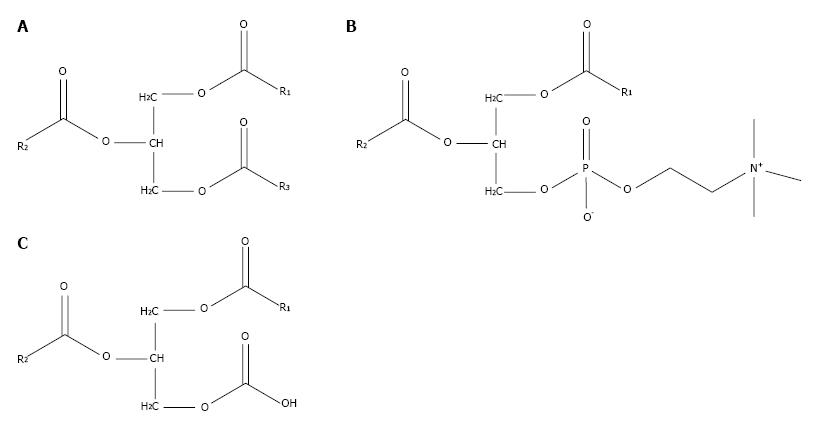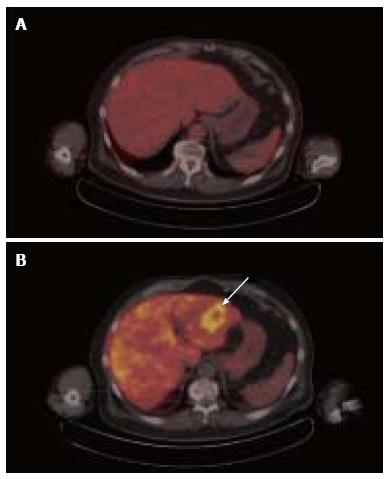Copyright
©The Author(s) 2016.
World J Radiol. Nov 28, 2016; 8(11): 851-856
Published online Nov 28, 2016. doi: 10.4329/wjr.v8.i11.851
Published online Nov 28, 2016. doi: 10.4329/wjr.v8.i11.851
Figure 1 The interplay between glucose, acetate, and choline metabolism.
By providing substrate for de-novo fatty acid synthesis, acetate metabolism may feed into phosphatidylcholine synthesis, explaining why tumors showing high uptake of 11C-acetate may also show increased uptake of radiolabeled choline on PET. Because acetyl-CoA produced from acetate may also serve as a substrate for the citric acid cycle and other pathways, it is possible that, for some cancers, 11C-acetate uptake may not always provide a consistent readout of tumor lipogenesis. The Kennedy pathway is an ATP-dependent pathway that may rely to varying degrees on glycolysis as a source of ATP. ATP: Adenosine triphosphate.
Figure 2 Lipid molecules composed of glycerol esterified to fatty acids.
Triglycerides (A), phosphatidylcholines (B), and diglycerides (C) resemble each other because of their common glycerol backbone. Molecular species of these compounds, particular phosphatidylcholines, can have broad functional variations based on the length and saturation of their fatty acyl components, R1, R2, and R3.
Figure 3 Corresponding 18F-fluorodeoxy-D-glucose positron emission tomography/computed tomography (A) and 18F-fluorocholine positron emission tomography/computed tomography (B) images of hepatocellular carcinoma obtained from the same patient on different days.
The tumor is not at all evident on transaxial images of the liver from FDG PET/CT (A). Corresponding transaxial images of the liver from 18F-fluorocholine PET/CT (B) shows a 5-cm diameter circumscribed area of increased uptake in the left hepatic lobe (B) This tumor contained within the left hepatic lobe was histopathologically confirmed to be a well-differentiated HCC. FDG: 18F-fluorodeoxy-D-glucose; PET: Positron emission tomography; CT: Computed tomography; HCC: Hepatocellular carcinoma.
- Citation: Kwee SA, Lim J. Metabolic positron emission tomography imaging of cancer: Pairing lipid metabolism with glycolysis. World J Radiol 2016; 8(11): 851-856
- URL: https://www.wjgnet.com/1949-8470/full/v8/i11/851.htm
- DOI: https://dx.doi.org/10.4329/wjr.v8.i11.851















